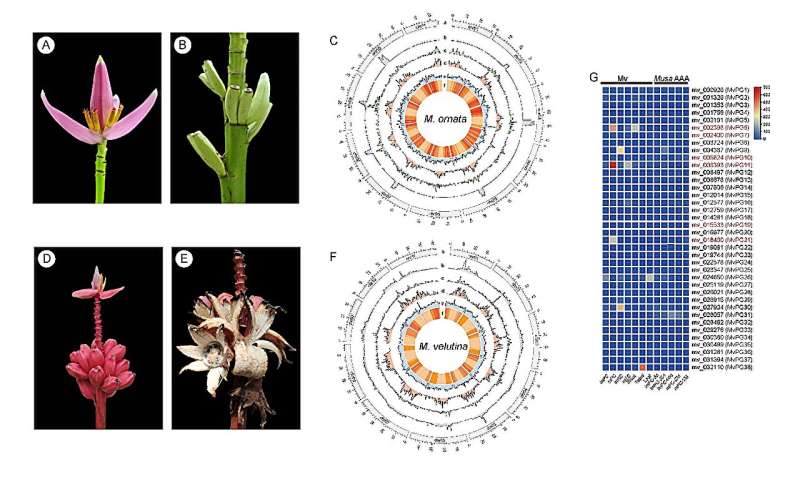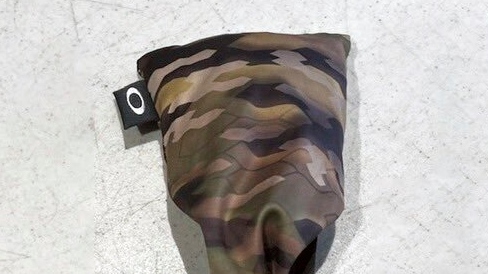
The genus Musa, encompassing approximately 70 herbaceous species, is predominantly found in the tropical and subtropical regions of Asia and Oceania. This genus is renowned for being one of the most important food crops globally and popular ornamental plants in the markets.
Despite the significant contributions made by third-generation sequencing technologies in producing high-quality genomes, there remains a dearth of genomic resources for banana cultivars, their wild relatives, and the ornamental species within Musa, which hampered the improvement of both the crop and ornamental varieties.
Musa ornata W. Roxburgh (Mo) and Musa velutina H. Wendl. & Drude (Mv) belong to the section Musa of the Musaceae family. They are closely related to Musa acuminata and are native to Bangladesh, Myanmar, and northeast India. These species are not only widely cultivated as popular ornamental plants in tropical regions but also contribute to the local diet through their fruit.
Therefore, Mo and Mv are desirable candidates for high-quality genome sequencing to enhance future molecular breeding. In this study, the chromosomal-level genome assemblies of Mo and Mv were generated using Oxford Nanopore long reads and Hi-C reads. The genomes of Mo and Mv were assembled into 11 pseudochromosomes with genome sizes of 427.85 Mb and 478.10 Mb, respectively.
Repetitive sequences comprised 46.70% and 50.91% of the total genomes of Mo and Mv, respectively. Genome quality assessments confirmed the contiguity (LAI: 13.68 and 16.81), accuracy (mapping rates of Illumina reads: 95.55% and 94.29%), and completeness (BUSCO: 98.08% and 98.51%) of the two genomes.
According to the gene predictions, a total of 39,177 and 31,256 high-confidence protein-coding genes were annotated for Mo and Mv, respectively. Compared to Musa acuminata and Mv, several large inversions and translocations were observed on chr04 of Mo. Differentially expressed gene (DEG) and Gene Ontology (GO) enrichment analyses indicated that upregulated genes in the mature pericarps of Mv were mainly associated with the saccharide metabolic processes, particularly at the cell wall and extracellular region.
Furthermore, several polygalacturonase (PG) genes were identified that showed higher expression levels in mature pericarps of Mv compared to other tissues, which may be accountable for pericarp dehiscence. In addition, this study also identified genes associated with anthocyanin biosynthesis pathway.
Taken together, the chromosome-level genome assemblies of Mo and Mv provide valuable insights into the mechanism of pericarp dehiscence and anthocyanin biosynthesis in banana, which will significantly contribute to future genetic and molecular breeding efforts.
The article “Chromosome-level genome assemblies of Musa ornata and Musa velutina provide insights into pericarp dehiscence and anthocyanin biosynthesis in banana” has been published in Horticulture Research.
More information:
Tian-Wen Xiao et al, Chromosome-level genome assemblies of Musa ornata and M. velutina provide insights into pericarp dehiscence and anthocyanin biosynthesis in banana, Horticulture Research (2024). DOI: 10.1093/hr/uhae079
Citation:
First chromosome-level reference genomes of the ornamental banana and pink banana (2024, April 24)
retrieved 25 April 2024
from https://phys.org/news/2024-04-chromosome-genomes-ornamental-banana-pink.html
This document is subject to copyright. Apart from any fair dealing for the purpose of private study or research, no
part may be reproduced without the written permission. The content is provided for information purposes only.







